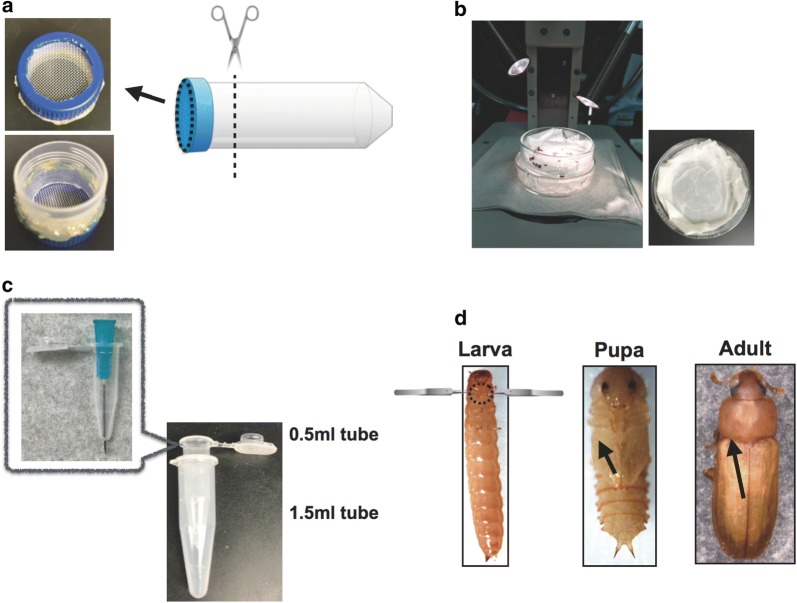Fig. 1.
Method for collecting hemolymph. a Creating a handmade sieve for washing T. castaneum. The 50 ml tube drawing (http://g86.dbcls.jp/~togoriv/) is licensed under the HYPERLINK http://creativecommons.org/licenses/by/4.0/deed.ja. Creative commons display 4.0 license http://creativecommons.org/licenses/by/4.0/deed.ja. b Set up of stereomicroscope. c Structure of handmade collection tube, which consisted of a 0.5 ml tube with a hole at the bottom placed inside a 1.5 ml tube. d Location of punctures created in the larvae, pupae, and adults. Larvae were pinched at the root of their legs using two forceps, and the legs were pulled in opposite directions. The black broken circle indicates the location for creating a small tear. The forceps drawings (http://g86.dbcls.jp/~togoriv/) are licensed under the HYPERLINK http://creativecommons.org/licenses/by/4.0/deed.ja Creative commons display 4.0 license http://creativecommons.org/licenses/by/4.0/deed.ja. Pupae and adults were pierced with a needle at the points indicated by the black arrow. All protocols for collecting hemolymph from T. castaneum were performed on ice under a stereomicroscope

